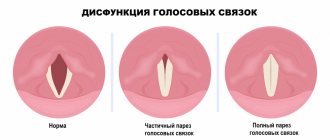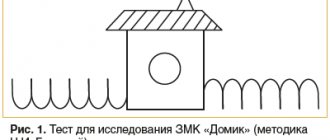Physical factors that provoke sensory and motor disorders
These factors include:
- Electromagnetic radiation
- Ionizing radiation
- Vibrations
- Electricity
- Exposure to high and low temperatures
- Mechanical injuries
For example, with general or local hypothermia, the rate of metabolic processes in cells decreases, and their ability to generate an action potential and conduct it further along the nerve processes deteriorates accordingly.
Sensory and motor disorders are possible in case of exposure to too high temperatures, for example, with fever or overheating, the metabolism in the body increases, the processes of damage to the components of the nervous system with the concomitant development of extreme inhibition and depletion of their energy resources intensify.
Sensory and motor disorders can be caused by toxic substances of natural or synthetic origin. There is a group of neurotropic toxic substances that can selectively accelerate the bioenergetic process in cells and disrupt the normal mechanisms of formation, release, transport and metabolism of neurotransmitters.
Sensory and motor disturbances are also observed with changes in the concentrations of hydrogen ions and electrolytes in the blood. Such processes are typical for fasting, when the body does not receive the amount of vitamins it needs, especially B vitamins.
Sensory and motor functions of the nervous system can malfunction due to pathological disorders of the endocrine glands.
Particular attention should be paid to the peculiarities of the work of the NS in connection with the age factor. Previously, it was assumed that from the age of 25 a certain number of nerve cells gradually begin to die off in the human body. Today it has been established that they do not die off, but undergo atrophy. Thus, brain mass decreases with age. In different zones, the process of reducing the mass of neurons begins at different times and proceeds at different rates.
Sensory and motor disorders can result from the body's reactions to certain social factors. For example, violations provoke severe emotional stress - spontaneous or chronic. A person can accumulate dissatisfaction with his social status, appearance for years, and be too susceptible to criticism from people around him.
Excessive mental stress has a negative effect. Frequently occurring or long-term conflict situations, as well as intense mental activity without a proper period of rest, can cause disturbances in the functioning of emotional centers, the development of neurotic conditions, and mental illnesses.
The cause of sensory and motor disorders may be a genetic factor. Hereditary pathologies are manifested by metabolic disorders in certain groups of neurons, as well as underdevelopment of individual structures of the nervous system. Hereditary diseases can also be secondary. For example, the primary disorder in phenylketonuria is a disorder of phenylalanine metabolism, and the secondary disorder is a disorder of the nervous system due to intoxication with the products of excited metabolism of this amino acid.
Sensory and motor disorders can be caused by pathological processes occurring in the body - inflammation, local circulatory disorders, neoplasms. Inflammation of peripheral nerve conductors causes disturbances in the sensitivity and functioning of internal organs.
Inflammation of the cells of the central nervous system is usually localized in the meninges. The consequence is disturbances of cerebral circulation, outflow of cerebrospinal fluid, and increased intracranial pressure. Such disorders can provoke the development of encephalitis.
As a pathogenesis of motor and sensory disorders, only the mechanisms of impairment in neurons are well studied. These include the loss of the cell’s ability to generate an action potential, conduct it along processes, and maintain the required value of the membrane potential.
The functionality of the NS is determined by the ability of its cells to interact with each other. In certain parts of the brain, one neuron is capable of forming up to 2 million contacts with other nerve cells. During the course of various pathological processes in the human body, a decrease in the number of interneuron contacts occurs, which causes disturbances in the normal system.
One of the links in the pathogenesis of disorders of the motor and sensory functions of the nervous system are disturbances in the formation, decay and release of mediators.
Dysfunction of neurotransmitters and nerve cells
The main functions of the NS include:
- Generation of an action potential
- Conduction of excitation along nerve fibers
- Transfer of excitation to other cells - glandular, nerve, muscle
The normal functioning of neurons is ensured due to the metabolic processes occurring in it. In a neuron, during the metabolic process, an asymmetric distribution of ions is created inside and on the surface of the cell, which in turn determines the action potential and the resting potential. Due to metabolic processes, energy is supplied to the sodium pump, which extremely actively overcomes the electrochemical Na+ gradient on the membrane. This suggests the conclusion that all processes and substances that increase metabolism and lead to a decrease in energy production in the nerve cell sharply reduce the excitability of neurons. We are talking about poisoning with dinitrophenol, azides, cyanides, as well as hypoxia.
The degree of functionality of a neuron varies with changes in the concentration of 1- and 2-valent ions in the environment. The neuron completely loses its ability to excite in an environment completely devoid of Na+. K+ and Ca 2+ also significantly influence the magnitude of the membrane potential.
The inability of NS fibers to conduct excitation is observed in the case of the development of dystrophic disorders in the myelin sheath, inflammation, cooling of the nerve or its compression, hypoxia, under the influence of toxic substances.
When severe damage to a nerve occurs, accompanied by a loss of its connection with the neuron body, it undergoes degeneration, that is, the transport of substances and axoplasmic flow stops. One day after the nerve is damaged, myelin begins to move away from the nerve fiber nodes. Then it collects into large drops, which in turn dissolve over time. Neurofibrils are susceptible to fragmentation. As a result of such disturbances in the structure of the nerve, only narrow tubes consisting of neurolemocytes remain. A few days after the onset of nerve degeneration, it loses excitability. Subsequently, the processes of neurolemocytes penetrate into the synaptic cleft, separate the terminals from the postsynaptic membrane and phagocytose them.






